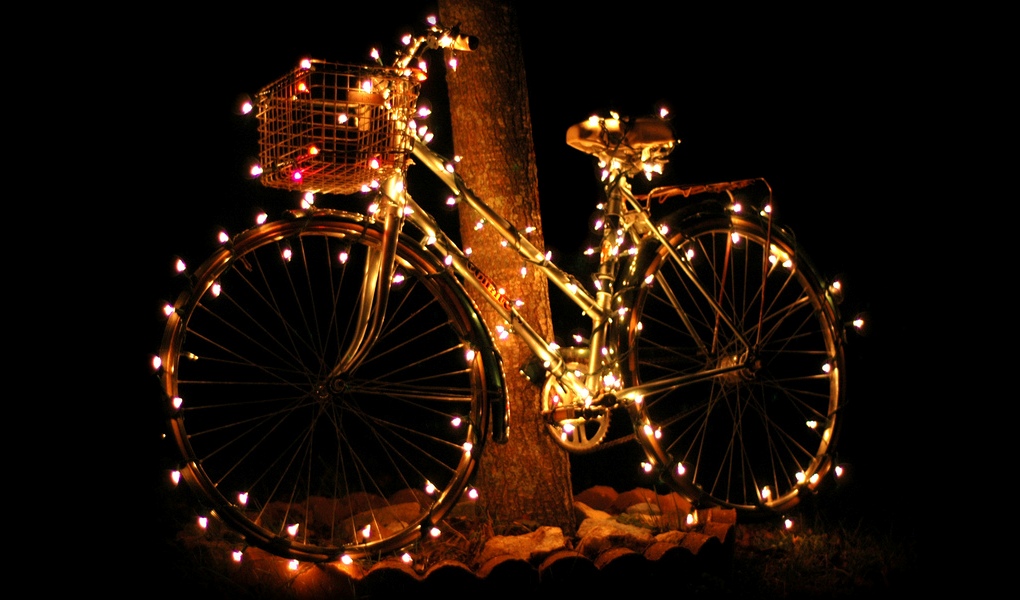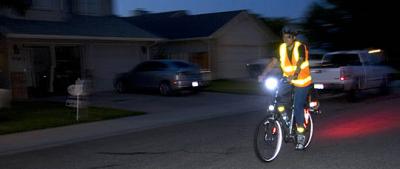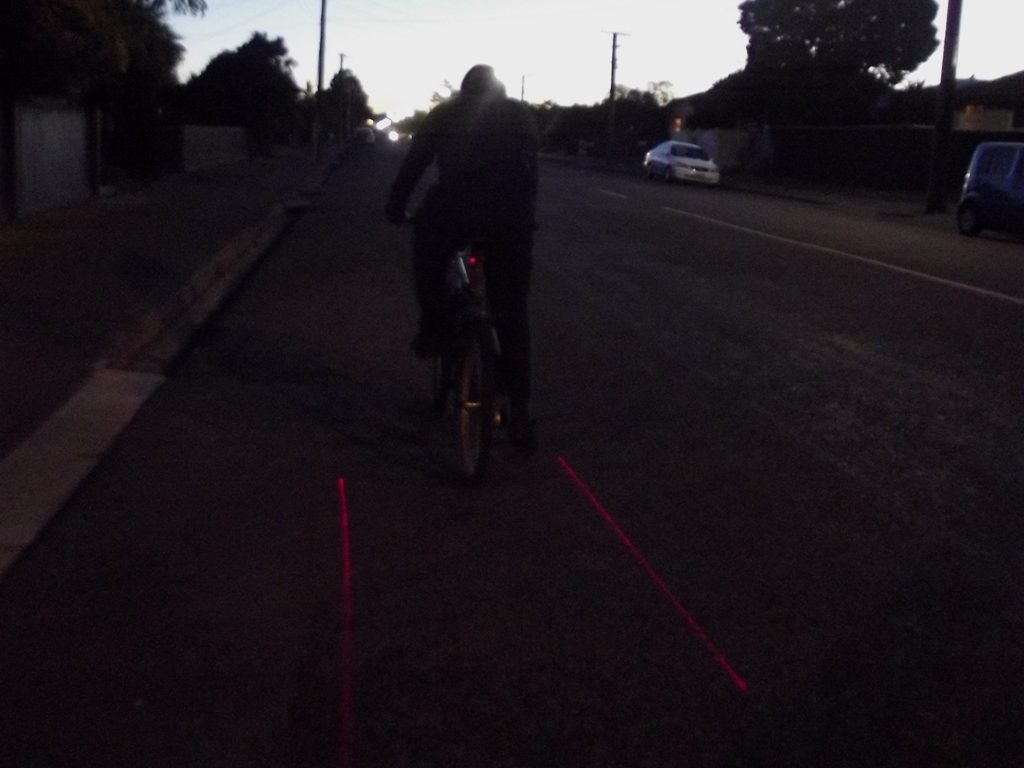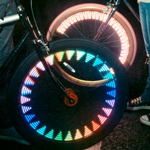Daylight savings ends this weekend and things suddenly get a lot darker if you’re riding home at night. So, as the days get shorter, it’s a good time to review what your visibility on a bike is like in dusk and darkness.

The law is pretty clear on what you must have on your bike when riding at night or in poor visibility (updated from Dec 2016):
- A red or yellow rear reflector that is visible from 100m when light shines on it.
- One or more steady or flashing rear-facing red lights that can be seen at night from 200m away.
- ONE OR TWO white or yellow headlights that can be seen at night from 200m away. (only one of them can flash, and you could have one on your helmet)
- Pedal retro-reflectors on the front & rear ends of each pedal, or you must wear reflective material.
- You can also have additional front (not red) and side reflectors if you wish.

This really though is a minimum level and so you should consider what else you might want to do to (a) make yourself more visible, and (b) make it easier to see things in the dark:
- You could get yourself a brighter set of lights. It’s amazing some of the power that can be found in the latest technology. Last year Greater Wellington Regional Council did a very useful survey of more than 50 bike lights to test their actual effectiveness, particularly at different angles. While some were brighter than a dipped car headlight, others were near invisible at a slight angle from straight (a bit of a worry if you’re relying on them to be noticed by others). Hopefully they will update their list; I’d love to know how well my new little Diamondback Lumina light stacks up against these.
- You could wear some brighter reflective gear. We’re certainly not keen on the call for mandatory hi-vis from some quarters, but in the right places it can be a useful accessory. This could range from simple ankle reflectors or reflective sash to full-on reflective jackets. If you have a backpack on, then a reflective backpack cover also makes sense.
- You could make your bike more visible from side on. Some ways to do this include buying reflective tyres or wheel rims, putting reflective tape or wrappers on your frame, or attaching a bunch of spoke reflectors to your wheels (one keen soul even got his entire frame covered in reflective paint).

Interestingly one of the issues that is starting to crop up as bike lights get more powerful is whether they are too bright. The Cycling Advocates Network (CAN) recently called on riders to make sure that they weren’t dazzling other road users with their lights. This could particularly be an issue if you have a rather strong helmet-mounted light.
Actual bike light practices in New Zealand always seem to be in advance of what the laws allow, e.g. everyone was using flashing bike lights before they were technically allowed. And so it is that a number of products are out there in the market that are not technically legal in NZ (yet), although I would be surprised if a Police officer pulled you up. Some examples include:
- The fabulously zany MonkeyLectric wheel lights (see right) previously profiled on our pages, that provide a myriad of crazy patterns while you’re riding.
- The very clever Pedalite pedal-mounted lights that are powered by the rotating movement of your pedals to provide flashing front, back and side lights.
- Need a bike lane when there isn’t one? Now you can get rear lights that use a couple of lasers to create your own bike lane! I bought one and it’s interesting to see how much space cars seem to give you when passing…

What are you preferred tools of choice for standing out from the crowd on your bike?



IMO the really bright helmet mounted lights are a major issue. ie white light shining in a direction other than forwards, and mounted too high.
I use a bright led light, but have it handle bar mounted.
I agree. The problem with helmet mounted lights is that if like most cyclists you look at drivers and make eye contact, you are almost certainly blinding the driver.
I too have a very bright LED, on my handlebars, and I make sure the angle is somewhat dipped.
It is amazing how far LED technology has come and it’s only a matter of time before the legislation catches up with the technology and they’re banned, hopefully before a serious accident.
I think a fixed light powerful enough to illuminate the road in front where surface hazards might lie is far more effective for seeing and being seen than pointing into space or wherever you look.
An illuminated patch of road in front of me has much the same effect as the lane laser and combined with spoke and pedal or shoe reflectors are all the dynamic lighting I need to feel my presence, direction and speed is immediately recognizable to other road users.
A headlamp that doesn’t illuminate the road in front can appear static and one that blinds other road users only compromises safety and fuels animosity.
That said I’d love some Monkey Lights (for occasional use only)
I agree too. Car (and other drivers like me) look down to the road surface in front of them. Helmet mounted lights are way too high .And that goes for rear ones as well.
IMO flashing lights in general are fine for being noticed at a distance, but close up, I find it difficult to judge the direction and distance of the flasher. Put two or more together and it is the “fire engine effect” – complete confusion.
I also observe many bicycle rear lights obscured by bags, coats, etc. A situation that the rider is unaware of.
Actually another point is that you should always have two rear lights. If one goes you’ll never notice because it’s behind you.
The latest bike lights for 2013 have now been tested by Greater Wgtn Regional Council – see http://www.gw.govt.nz/be-safe-be-seen/
already so many cyclists travelling home with no lights!! front or back, just the factory standard reflectors. then you have the previously mentioned led strobe bombs that dazzle everything in their path. those that own them, try to be considerate. their are bike lights which don’t flash – buy those and limit the ones that would be seen from space.
I agree Peter. Can’t believe how many people I see every day riding their bike in darkness with no lights….. Why do people seem to think a pink vest or a plastic hat is more important than being seen???? A rear light is the most important piece of safety equipment on a bike in darkness, followed closely by a front light.